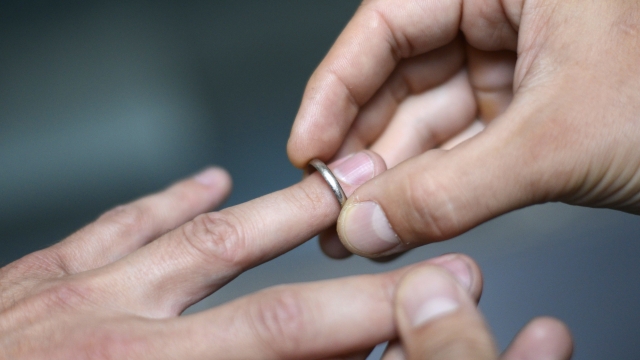Most of us regard ourselves as honest, faithful people. We would never cheat on our partners, and we would never go out of our way to give another woman the attention that belongs to our partner. But where does the line really lie when it comes to cheating?
Just like most of us are faithful, committed partners, most of us are also unintentional flirts. These simple interactions mean nothing to us, and they’re just a fact of life in certain settings. Your waiter, for example, is going to flirt a little, in order to get a better tip. Your checker at the grocery store might give you a little extra special attention, and because you like the attention, you give it right back. It’s not until the subject of your actual intent comes up that you realize you’ve been sending unwanted signals, and the person on the receiving end thinks you meant something that wasn’t so innocent.
The signals we send in our everyday social interaction are encoded to mean different things, and these things are widely understood by most people. (Especially people who specifically read about those signs, so go you!) The problem is that they aren’t very specific. Many of the “friendship cues” we send out are very similar to the cues we send out when there’s romantic or sexual interest. In some cases, the lines between “friendship cues” and “enemy cues” may be subtle, too. Just because we have one thing in mind, that’s not necessarily what our conversation partner is reading.
In crowds, this can get even more complicated, because it’s not really clear who the subject of your cues is. Sure, you could assume that someone is sending signals to the person seated directly across from them – but what about the person they keep making eye contact with? What about the person who made them blush when they walked in? What about the bar tender? It’s easy to see how signals can get misinterpreted and attributed to the wrong person.
When it comes to the people you see regularly, such as the barista at the local coffee shop, or the coworker in the cubicle next to you, the flirtation is often even more complex than with strangers at the bar. In these situations, your mind subconsciously plays with the idea of something happening with this person. At socially-appropriate points of physical contact, such as hugs and handshakes, you’re tempted to linger just a little longer than what’s acceptable. You don’t do it, but you think about it.
As humans, we like to leave our options open, even if we’re certain of the choices we’ve made. We like knowing that we have an escape strategy, even if we tell ourselves we thrive on not having one. It’s just the way we work – we like choices. The issue here is that the signals we send aren’t as subtle as we think they are, so the people who are constantly exposed to our seemingly-insignificant cues will be better equipped to notice them, and they may respond accordingly. If you’re in a relationship and didn’t intend for this flirting to go anywhere, this can be a very complicated situation.
According to Jeffrey Hall and Chong Xing, Communications Studies at the University of Kansas (2015), your personality plays a part in the way you flirt. Hall and Xing examined the “5 basic flirting styles” that they attribute to different personality types. Everyone flirts, they say, but the way that we flirt is influenced by our personality, as well as whether we’re comfortable with having sex with someone other than our partner. Since these parts of the cues aren’t as widely known, the people who experience our flirting styles might not notice the differences as much.
In a different study, Hall and some colleagues used a self-reporting measurement for rating a person’s flirting style, but in the study with Xing, the participants were “graded” by complete strangers. 51 pairs of undergraduates, none of whom were in a relationship, were given a list of things to talk about, with their assigned partner. Each participant would then answer questions about the attractiveness of their conversation partner – a metric that’s largely influenced by flirting.
In the 10-minute interaction time, researchers obtained substantial data about the verbal and non-verbal interaction between the participants. They split this data into several categories, including arm and leg crossing, head nodding, licking the lips, teasing, and self-disclosure. They were able to identify behavioral differences between the different self-reported flirting personalities, and they developed a more specific and detailed look at the flirting styles. Which one are you?
The Physical Flirt
People who flirt physically tend to subtly touch people they’re attracted to. In Hall and Xing’s study, women who self-identify as physical flirts tend to be more open with their body movements. These women move their hands to the side of their body, rather than between themselves and their conversation partner while they talk. Self-identified male physical flirts tend to look away from their conversation partner more, and rarely give out compliments.
The Traditional Flirt
Those with more of a traditional flirting style think that the man should make the first move. (This study was done with heterosexual participants, so we’re not sure exactly how this would translate to same-sex relationships, but I speculate that it would be the more masculine-presenting of the two women involved.) Women who identify as traditional tend to use verbal teasing more, while the men who identified as traditional were more likely to lean in toward their conversation partner.
The Sincere Flirt
Sincere flirts are genuinely interested in the other person. These people inspire others to open up to them, and they rarely use verbal teasing as a conversation starter. Both men and women who identify as sincere flirts are more likely to exchange flirtatious glances with strangers when meeting.
The Polite Flirt
Those who don’t think they flirt with strangers are, most likely, a polite flirt. This flirting type doesn’t exactly like the idea of flirting, but does like the idea of getting to know a person better. People who self-identify as the polite flirting type won’t engage in teasing and won’t inch in closer to their partner. Women who identified with the polite flirting style didn’t ask as many questions as the other flirting styles, either.
The Playful Flirt
Playful flirts are the ones we think of most when we hear the term “a flirt”. This person thrives on the attention exchanged, but isn’t really looking for anything more serious than a conversation. In some cases, the playful flirt might even be trying to get something else out of the interaction, like a favor or gift. Men and women who identified as playful flirts were more likely to show physical signals, such as pushing out their chests. Flirtatious glances are also more likely, especially in women.
Regardless of which flirting style you personally identify with, this study found that there were certain behaviors that reached across all groups. Attraction to a person results in you touching your own body less frequently, and dishing out compliments (with the exception of male physical flirts).
Toward the end of the interaction, verbal teasing slows down. Understanding all the subtle signals that your body sends out when you’re attracted to someone is hard, but it’s worth knowing what messages you’re sending, so you can try to manage them when necessary.









